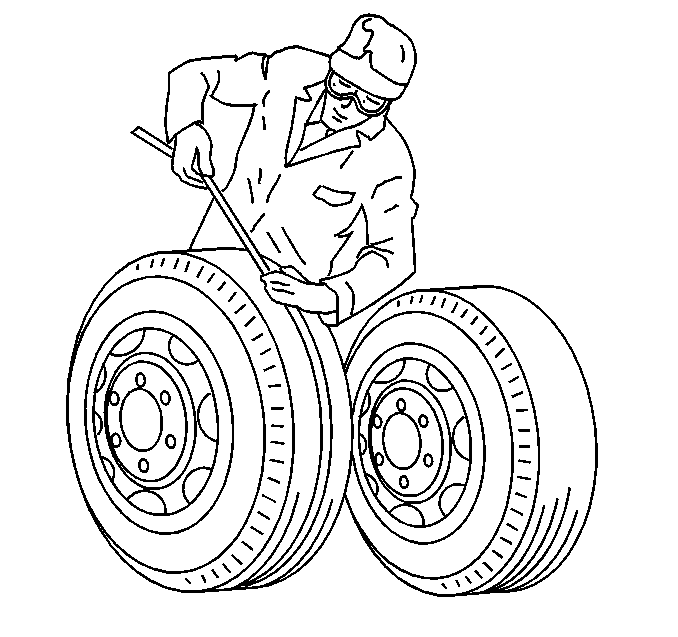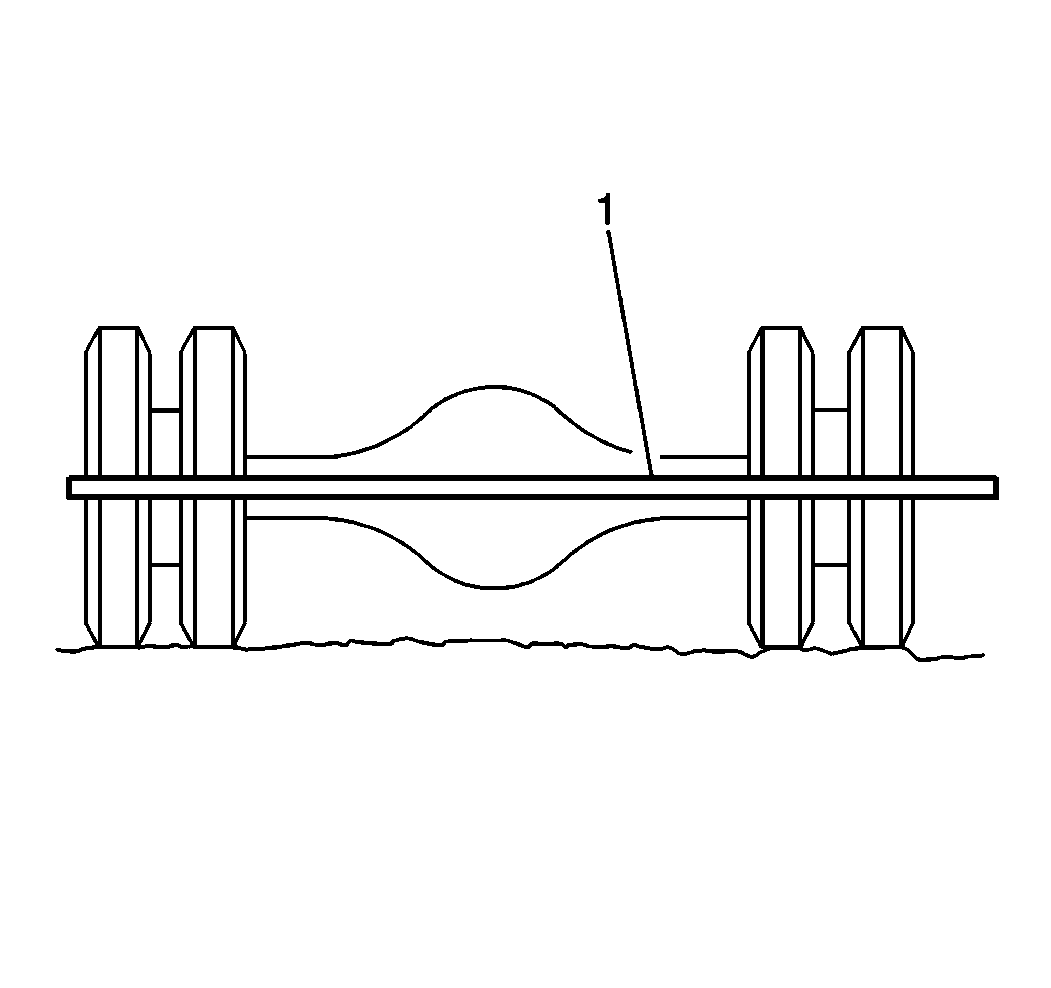Mismatched tires on tandem drive units will cause the following
conditions:
| • | Possible damage to the drive units |
- Match the tires to within 3 mm (0.125 in) of the
same rolling radius and 19 mm (0.75 in) of the same rolling
circumference.
Notice: The four largest tires should never be installed on one driving axle or the
four smallest tires on the other driving axle. Such tire mounting will cause an inter-axle
bind and unusually high axle lubricant temperatures that result in premature lubricant
breakdown and possible costly axle damage.
- Ensure that the total tire circumference of one driving axle matches
the total tire circumference of the other driving axle as nearly as possible.
This will result in higher tire mileage. This will also maintain
satisfactory temperatures of tandem axle lubricants which lengthen
the drive unit service.
- Park the vehicle on a level floor, carrying an evenly rated capacity
load. Verify that all of the tires are the same size. Measure new tires in
order to be sure that the tires will be correctly matched.
- Inflate all tires to the same recommended pressure.

- Measure the rolling circumference
of each tire. Use a steel tape after you have inflated the tires and placed
the tires on their rims, but before you have installed the tires
on a vehicle. This is the most accurate method. This procedure
allows for any irregularities in wear.

- Check the tires already
installed on the vehicle. Use one of the following devices:
| • | Ensure that the device is long enough to lie across the treads of all
four tires. |
- Mark the size on each tire with chalk. Arrange the tires in order
of size, largest to smallest.
Installation Procedure

- Install the two largest
tires on one side of one axle.
- Install the two smallest tires on the opposite side of the same
axle.
- Install four other tires on each of the other axles as described
in steps 1 and 2.
- Check the tires using a string gauge (1).
- Inspect the rear axle lubricant temperature readings.
| • | Run the vehicle for accurate readings. |
| • | Vary the tire air pressure, within the tire manufacturer's recommended
range, in order to ensure that the lubricant temperature of both axles is
within 17°C (30°F) of each other and not in excess
of 104°C (220°F). This will result in uniform
tire loading and will assure good tire life. |



